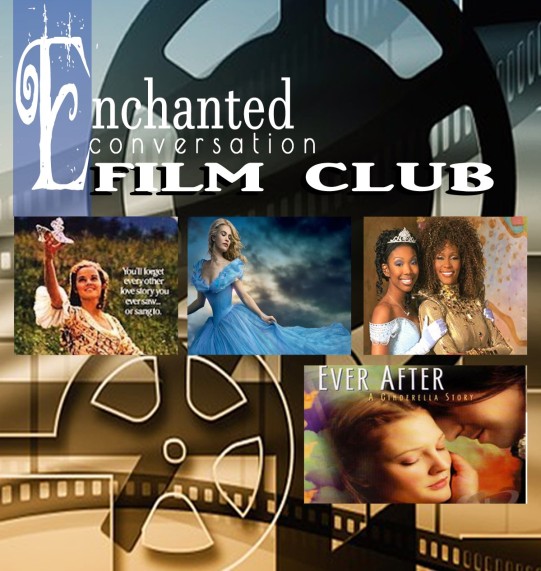“Sleeping Beauty” and the Spinning Room
So, we all know the story: at the little princess’ christening, she is cursed to prick herself on a spindle and die. The good fairy mitigates the curse to a 100-year sleep. However, “The king, hoping to rescue his dear child, issued an order that all spindles in the entire kingdom should be destroyed.” (Grimms’ version)
I was looking up the German custom of “Spinnstuben“, Spinning Rooms: regular gatherings of village women in the evenings of the winter months for the purpose of getting their spinning done (sort of like the colonial custom of Quilting Bees, or today’s Stich-‘n-Bitch sessions). It was a place to get boring and repetitive work done in a social setting. A Spinnstube was also sometimes called Lichtstube, light room – it saved candles to only light up one room that everyone sat in. The women did spinning and other textile work, the men perhaps woodcarving; they’d sing folk songs and tell stories. A lot of fairy tales and folklore were disseminated at those gatherings.
However, one thing I learned was that this practice wasn’t always looked upon with a benevolent eye by the authorities. I had pictured a Spinnstube as a gathering of all the village women, a regular event for everyone, but according to what I found out, it was mostly a young person’s gathering. Sometimes it was co-ed, sometimes divided into guys and girls, with the guys coming along at the end of the evening to escort the girls home. One of its main purposes was for young people to have a chance to socialise and get to know one another; it was the chief place for the young folk to couple up.
This article & video (in German) describes the custom from Upper Franconia, where it was still practised up until the 1950s, and interviews some elderly couples who remembered participating (translation and emphasis mine):
“First the women came at 7:00 and did their needlework, and then the men came at 9:00, then the women had to quit knitting and the fun started.”
Bruno Gernert from Wülfersthausen
He also describes in the video that if a girl didn’t want to quit her needlework, the boys would take her yarn and tie it around the table leg so she couldn’t keep going – they wanted to get to the fun part, playing games or even dancing (they had an accordionist who would play for two hours straight for the payment of only one fresh egg per person). Another interviewee says, with a suggestive eyebrow waggle at his wife of 58 years sitting beside him, that sometimes the lights would be turned off, and “that’s when they got to know each other much better.”
So, spinning, sure, but not just spinning…
“The whole light room practice was a thorn in the eye of the authorities; they did not like it, because a lot of matches were made there, and there was a lot of fooling around. They kept trying to forbid the light- and spinning rooms, but they never succeeded in abolishing them.”
Reinhold Albert, Historian in the Rhön-Grabfeld area
In addition, it wasn’t just the “immorality” of the spinning rooms that was a thorn in the flesh of the Powers That Be, but also the fact that they were excellent places for passing on gossip and political information, if not breed insurrection.
The Wikipedia article quotes a piece from the late 1880s (emphasis mine):
Because of the transgressions in moral behaviour that occurred there, several counties implemented Spinning Room Regulations, i.e. police rules regarding the time and duration of the gathering; in the area of what used to be Kurhessen, from 1726 on they were forbidden entirely. (Meyers Konversationslexikon of 1888-1890)
So:
The authorities didn’t like spinning rooms and tried to forbid them.
Spinning rooms were a chief source of fairy tales and their retellings.
The “Sleeping Beauty” tale features a king who tries to ban spinning in his kingdom.
Coincidence? I wonder…
Fairy Tales Are Ancient (Who Knew?)
I’m about three years behind the times here, but I just ran across a fascinating study, via this article from The Guardian:
Fairytales much older than previously thought, say researchers
Fairy Tale Food: The Gingerbread House
Fairy Tale Food: Pumpkins, and The Legend of Rose Petal
“Puss in Boots” by Lotte Reiniger
I just discovered one of my favourite fairy tales told by one of my favourite film makers, the amazing and talented Lotte Reiniger, who pioneered stop-motion silhouette animation in the early 20th century. Here it is: “Puss in Boots”, by Lotte Reiniger, 1954.
A Quartet of Cinderella Movies
From Enchanted Conversation Magazine:

Four live-action Cinderella movies to enjoy. I’d never watched that “Slipper and the Rose” one – I’ll have to see if I can find a copy. So many great movies…
“The Disney Effect”, by Allie May
An excellent series of three articles on how Disney is often the dominant version of classical tales, showing what the “originals” are like: “The Disney Effect”. I especially appreciate this because the author, Allie May, loves Disney, so this is not the Disney-bashing you might expect (“Oh woe, how The Evil Culture Industry has destroyed our beloved classic stories!”), but a fun and knowledgeable outlining of the elements of the source texts from which Disney wrote their films (or sometimes were just loosely inspired by).
